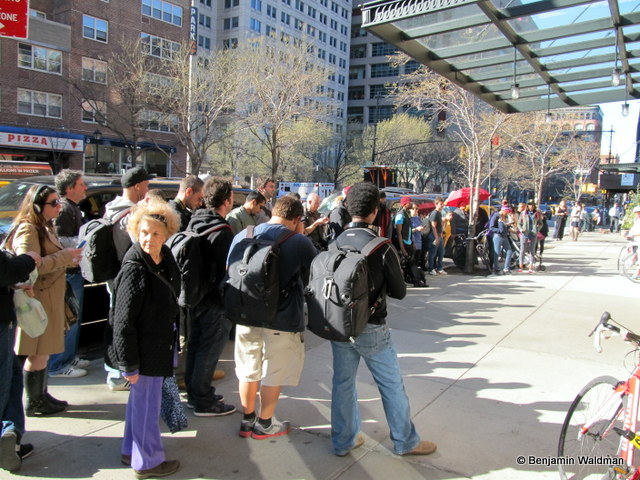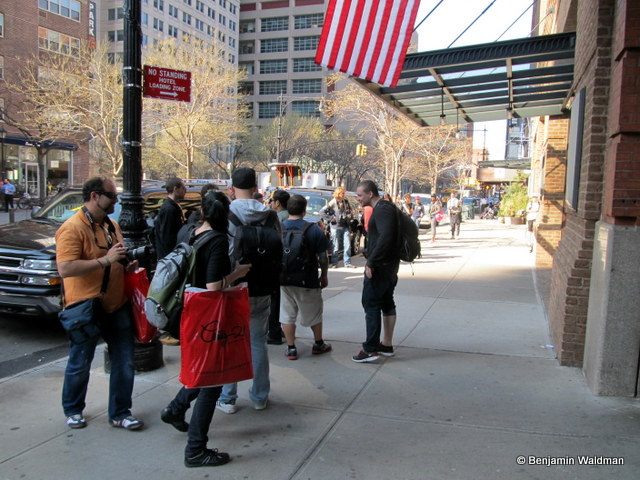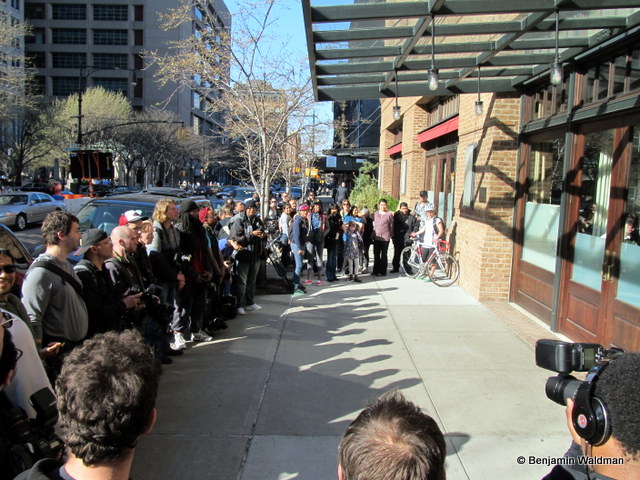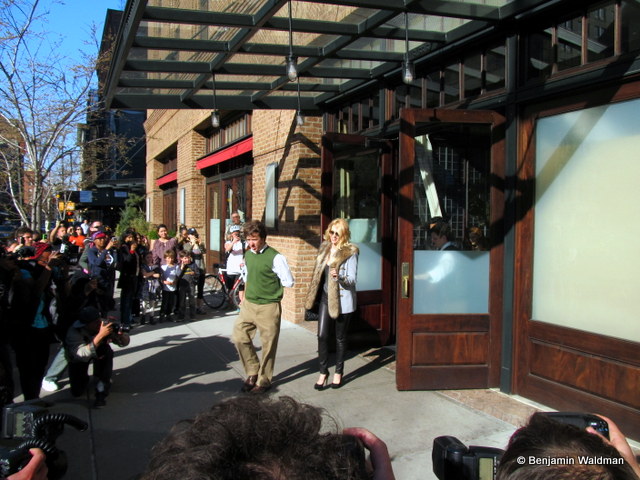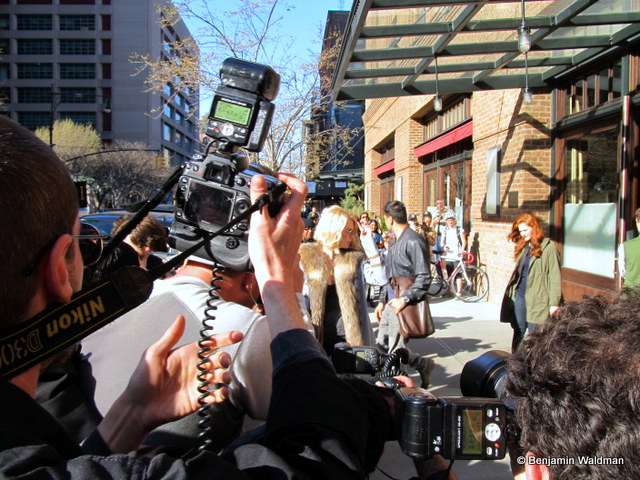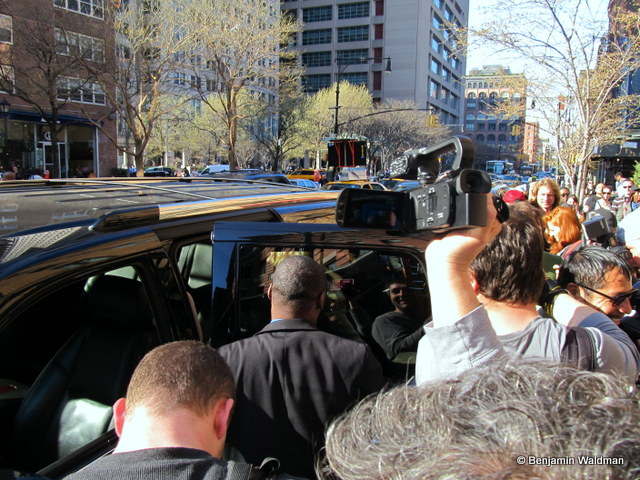Walking down Greenwich Street the other day, I came across a group of photographers standing outside of an unassuming door. The photographers were standing with their camera ready, lenses aimed at the door, and fingers ready to capture something.
I asked one of the photographers what they were waiting for and was told that January Jones, who plays Betty Draper on Mad Men, was inside and would be coming out shortly. This occurred around 3:50 in the afternoon. As the time passed, the paparazzi’s presence outside this door increased. Each time the door opened, the paparazzi started snapping away. However, time and time again, those exiting the door turned out not to be the paparazzi’s intended target. This cycle of excitement and disappointed continued on a regular basis.
By now other people were congregating on the sidewalk as well. Whenever someone walked in front of the paparazzi they tested their cameras in order to make sure that when the time came, their camera settings would be correct. One person said that the door led to a hotel, another said a restaurant. The former was correct–the door actually led to Robert DeNiro’s Greenwich Hotel. A camaraderie began forming amongst us non-paparazzi standing on the sidewalk. We were fascinated by the cultural phenomenon that created a need for a dozen professional photographers to photograph an actress every time she exits a building. Around four o’clock, things started getting exciting. A rumor began spreading that it was actually Michelle Obama and not January Jones for whom the paparazzi were waiting. Having never seen Mad Men before, this rumor provided me with a greater incentive to stay. But was it true? The paparazzi denied this rumor. However, we rationalized their denial by asserting that the paparazzi wanted us to think it was January Jones so we would leave thus providing them with more space to capture Michelle Obama walking through those doors.
By twenty after four, some of the people with whom I had been waiting began to leave. Without definite, or really even any, proof that the object of the paparazzi’s desire was the First Lady, they decided that the wait was no longer worth it. Around this time, a group of children stopped by and were vocally excited by the prospect of catching a glimpse of the First Lady. However, after about ten minutes, they too passed on.
Had we spent almost an hour waiting for Michelle Obama? I had seen a man exit the door carrying two handheld metal detectors, a woman who came out to join the crowd stated that she had witnessed Secret Service agents inside, a ConEdison employee confirmed the presence of the Secret Service and displayed a pin that he had received from one of them earlier in the day, and I saw a man come out of the doors wearing an earpiece and sporting the same secret service pin that we been shown by the ConEdison employee.
Our questions had finally been answered. Unfortunately, Michelle Obama did not exit from the doors. Within a few seconds, January Jones exited the building and was escorted into a waiting SUV. The paparazzi began to disperse. Some rode off to their next job while others opened their laptops and began uploading their photographs. It turns out that Michelle Obama wouldn’t be there until later that evening. As one of the photographers left, we discovered that the paparazzi had already been told by the Secret Service that they would not be allowed there. This scene would not repeat itself later in the evening.
When New Yorkers see celebrities walking down the street, they generally abide by a strict code of conduct. New Yorkers continue walking past the celebrities and at most turn their head to take in a second glimpse. They do not stop and gawk because there is an acceptance that celebrities are people too. Only after the New Yorker or the celebrity has left will the New Yorker vocally freak out. When the paparazzi are present, or if the celebrities is at an event, this code of conduct is thrown out the window. Standing with the paparazzi provides New Yorkers with the mob mentality that is normally absent from their daily interactions. The mystery of whom the paparazzi are waiting for and what might be occurring trump the normal social cues.
Joining the throng of paparazzi was invigorating. It was an exception to the way in which we normally interact with other New Yorkers. While I was disappointed that I hadn’t seen the First Lady, I was excited to have finally seen a celebrity. After hearing from my friends about their encounters with Conan O’Brien, Helen Mirren, Ben Stiller, Steven Spielberg, and Cameron Diaz, I finally had a story to tell (and a photo too).






